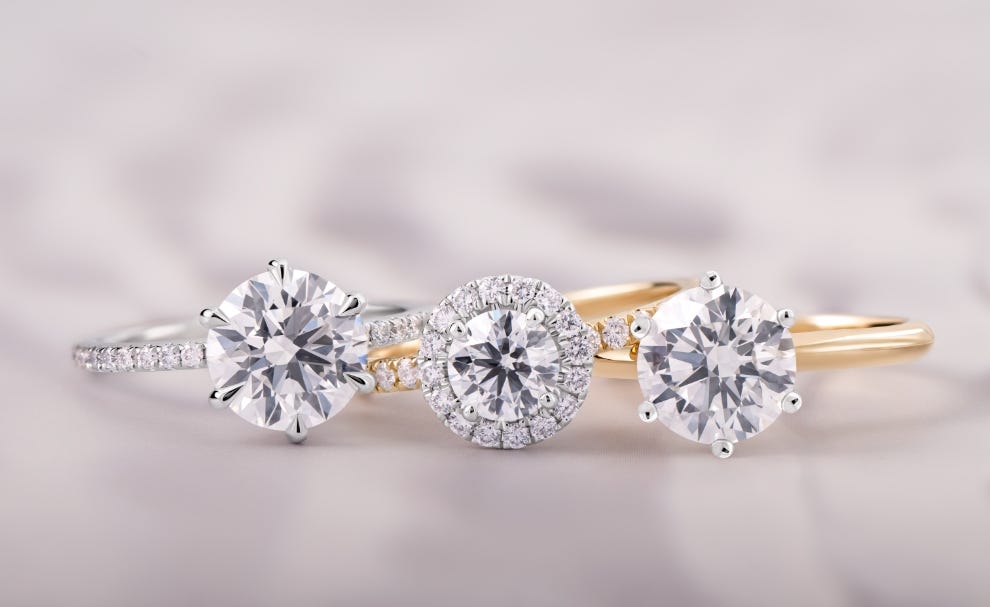Introduction
Lab grown diamonds, also known as synthetic diamonds or cultured diamonds, are sparking a revolution in the jewelry industryThese diamonds are created through advanced technological processes that replicate the natural conditions under which diamonds form in the earth’s mantleAs concerns over environmental sustainability and ethical sourcing grow, lab grown diamonds have emerged as a compelling alternative to their natural counterpartsThis article explores the cultural significance of diamonds, the rise of lab grown diamonds, and their impact on various cultures around the world.
Cultural Significance of Diamonds
Diamonds have held profound cultural significance throughout history, symbolizing love, wealth, and power across various civilizationsIn ancient India, lab grown diamonds and cultures, diamonds were revered as symbols of purity and strength, while in ancient Greece, they were associated with the gods and believed to possess mystical powersIn Western cultures, diamonds became synonymous with everlasting love and commitment, symbolized by the tradition of exchanging diamond engagement rings.
The Rise of Lab Grown Diamonds
Recent advancements in technology have made it possible to create diamonds in a laboratory setting, challenging the dominance of natural diamonds in the jewelry marketLab grown diamonds offer a sustainable and ethical alternative to mined diamonds, addressing concerns about environmental degradation and human rights violations associated with traditional diamond mining practices.
Cultural Acceptance of Lab Grown Diamonds
The cultural acceptance of lab grown diamonds varies across different societies and demographicsWhile some consumers value the rarity and authenticity of natural diamonds, others are drawn to the ethical and environmental advantages of lab grown diamondsCultural attitudes towards lab grown diamonds and cultures are evolving as awareness of their benefits spreads and societal values shift towards sustainability.
Impact on Traditional Diamond Markets
The growing popularity of lab grown diamonds has disrupted the traditional diamond market, posing challenges to established players in the industryAs consumer preferences change and demand for sustainable products rises, traditional diamond companies are facing pressure to adapt their business models to compete with lab grown diamond producers.
Lab Grown Diamonds and Sustainable Practices
Lab grown diamonds are gaining traction among eco-conscious consumers who prioritize sustainability in their purchasing decisionsUnlike natural diamonds, which require extensive mining operations with significant environmental impact, lab grown diamonds are produced using renewable energy sources and generate minimal waste.
Cultural Perception and Celebrity Influence
Public figures and celebrities play a significant role in shaping cultural perceptions and consumer behaviorEndorsements by celebrities and influencers have helped to popularize lab grown diamonds and challenge traditional notions of luxury and status associated with natural diamonds.
Lab Grown Diamonds in Fashion and Luxury
Luxury brands and jewelry designers are embracing lab grown diamonds as a symbol of modernity and innovationBy incorporating lab grown diamonds into their collections, these brands are catering to a new generation of consumers who prioritize sustainability and ethical practices.
Cultural Factors in Diamond Purchasing Decisions
Cultural beliefs and values influence individual preferences when it comes to purchasing diamondsWhile some cultures place a high value on tradition and authenticity, others prioritize innovation and sustainabilityCultural norms also play a role in shaping attitudes towards lab grown diamonds versus natural diamonds.
The Role of Marketing and Media
Marketing and media campaigns play a crucial role in shaping consumer perceptions of lab grown diamondsMessaging strategies that emphasize the ethical and environmental benefits of lab grown diamonds are resonating with socially conscious consumers, driving demand for these sustainable alternatives.
Cultural Differences in Acceptance
Cultural attitudes towards lab grown diamonds vary significantly across different regions and demographicsWhile some cultures embrace lab grown diamonds as a modern and sustainable choice, others remain skeptical due to deep-seated cultural beliefs and traditions associated with natural diamonds.
The Evolution of Cultural Attitudes
Cultural attitudes towards lab grown diamonds are evolving as awareness of their benefits grows and societal values shift towards sustainabilityYounger generations, in particular, are more open to embracing lab grown diamonds as a viable alternative to natural diamonds, reflecting changing cultural norms and priorities.
Lab Grown Diamonds in Rituals and Traditions
Lab grown diamonds are beginning to find their place in cultural ceremonies and traditions, challenging conventional norms surrounding the significance of natural diamondsAs attitudes towards lab grown diamonds evolve, so too do rituals and traditions associated with diamond jewelry.
Challenges and Opportunities
The cultural acceptance of lab grown diamonds presents both challenges and opportunities for the jewelry industryOvercoming cultural barriers and dispelling misconceptions will be crucial in driving widespread adoption of lab grown diamonds and harnessing the cultural diversity of consumer preferences.
Conclusion
Lab grown diamonds are reshaping cultural perceptions and practices surrounding diamond jewelry, offering a sustainable and ethical alternative to traditional mined diamondsAs awareness of the environmental and social impact of diamond mining grows, lab grown diamonds are poised to play an increasingly significant role in shaping the future of the jewelry industry and cultural attitudes towards diamonds.

